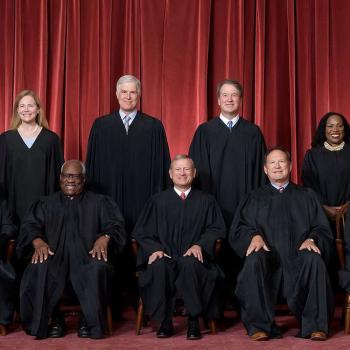In the course of a column on a recent Medicare bill, Michael Gerson observes that in the not-too-distant-past there were liberal Republicans (in the northeast) and conservative Democrats (in the past). Back then, lawmakers could form coalitions with kindred spirits across the aisle to pass legislation. But now both parties have undergone “ideological sorting,” so that Democrats are virtually all liberal and Republicans are virtually all conservative. Thus, votes are along party lines, and the only hope of advancing an agenda is to win a big enough majority to steamroll the other party. This is why, he says, our politics is so polarizing and it is so difficult to get legislation passed.
Read what Mr. Gerson says after the jump and consider the questions I raise.
From Michael Gerson, The Pelosi-Boehner compromise on Medicare is a rare bird – The Washington Post:
Political scientists disagree over the question of whether the ideological views of Americans have become more extreme over time. But they generally agree that America’s two main political parties have become more sorted, both ideologically and geographically. And they tend to agree that the views of party adherents across a range of issues have become more ideologically predictable.
Ideological sorting has been growing since the 1970s, and it involves the collapse both of southern Democratic conservatism and of northeastern Republican liberalism. For the first time (at least in the modern political constellation) the United States has a liberal party and a conservative party. (The Democratic coalition remains more ideologically diverse, but it has recently been sorting at a faster rate.)
This large historical shift does not lend itself to a single structural explanation such as gerrymandering (since the phenomenon can also be seen in Senate and county elections, not just House races). Liberals tend to argue that the trend is an outworking of civil rights-era racial politics or of growing economic inequality. Conservatives contend there has been a long-term backlash against the policy failures of modern liberalism, resulting in the emergence of figures such as Ronald Reagan and Newt Gingrich.
Whatever the cause, ideological sorting has naturally encouraged division. Conservatives and liberals no longer see people who think the way they do in the other political party. And the disagreements are exaggerated by geographic clustering. There is evidence that some Americans are choosing where they live to maximize their ideological comfort — which increases their sense of belonging as well as their partisan contempt.
Congress both reflects and encourages these divisions. Voting patterns have become polarized over time. More issues (from abortion to climate disruption) have become high-stakes, zero-sum ideological battles. The normal processes of budgeting and handling appointments have been disrupted. A long period of relative political parity between the parties has encouraged the belief that the next election might bring a victory so complete that compromise will no longer be necessary.
[Keep reading. . ]
But it seems like there are still socially liberal Republicans, which ally with the more monolithic socially liberal Democrats, so that this faction tends to always get its way.
Also, there are many different and contending kinds of conservatives–big business Republicans, social conservatives, libertarians, military hawks, small government tea partiers–that sometimes ally with each other and sometimes fight each other. Republicans may be ideological sorted, but they are far from unified. Democrats also have their big money faction and their populists, though they seem more unified than Republicans right now.
Republicans accuse each other of being RINOs, “Republicans in Name Only.” But can we identify that true strain?
Are there DINOs, “Democrats in Name Only”?
Could there be a different sorting, between big money Republicans and Democrats, and populist Democrats and Republicans?











